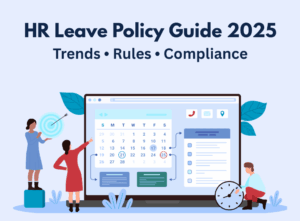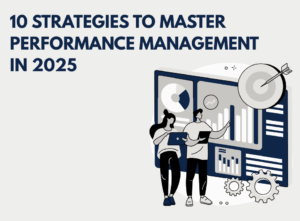Be it a small-medium sized business or a large corporation, the HR team is responsible for some of the most sensitive tasks. However, it wasn’t always that the HR team was seen as critical as it is in today’s world.
What once started off as a department solely responsible for hiring workers and managing their wages, over decades has evolved to focus on an organization’s strategic plans and manage the human assets effectively to reach organizational goals.
Human resource management is constantly evolving, it is no surprise that developments in technology have led to significant changes in how the HR team functions. Today, with plenty of HR tools available, you can equip your HR team to help them automate time-consuming tasks.
[optin-monster-shortcode id=”ji9msz3zadte5hioc9e0″]
-
Recruitment
The rise of artificial intelligence, machine learning, and predictive analysis algorithms, have not only helped sales and marketing teams in better finding leads and converting them but has also empowered HR teams to ease the hiring process.
Today, HR executives can choose from an array of tools that take care of posting job openings on multiple portals, track applications, and filter the most suited talent after analyzing all candidates. These tools can further automate an HR’s interview scheduling tasks reducing time wasted doing repetitive tasks.
Recruitment management tools can help your HR teams in automating repetitive recruitment tasks and focus on securing the right talent for your company. -
Onboarding
Let’s face it, no one enjoys paperwork, and not least when the paperwork seems to have no end. A situation your HR executives would find themselves in more often than not. This is further aggravated when there is a new hire, the HR has to make sure all applications are correctly filled, documents are collected and stored, and later to be processed by concerned teams to integrate the new hire to your company.
If the situation for HR executives feels dire, remember, most employees leave within the first 90 days, due to misaligned expectations, poorly defined job roles and complex company process. A complex onboarding process is bound to make your new hire feel uncomfortable and second guess his decision.
HR tools can ease the onboarding process by reducing the paperwork throughout the entire process, align the concerned teams to simplify and quicken the onboarding process, better manage the new hire’s integration into a new culture, and provide adequate training on-time. -
Record Management
As mentioned earlier, a big part of an HR’s work is to make sure all employee applications, their ID proofs, and investment declarations are collected and safely stored. Traditionally, this involves submitting hard copies of the required documents and storing in a file cabinet, which is time-consuming, and prone to human errors.
HRMS tools which provide functionality for you and your employees to upload documents can lower the human errors made, save cost on never-ending printouts making your office eco-friendly, and help your HR teams better utilize their productive hours. -
Attendance & Leave Management
Tracking employee attendance is critical for any company, your employee wages are calculated on the basis of days attended by them. Moreover, following traditional means of tracking employee attendance is highly inefficient and a cumbersome process. This problem is further aggravated as employee strength increases.
An HRM tool with leave and attendance tracking feature can help in efficient tracking of employees’ attendance and hours spent at work. Furthermore, HR executives and reporting managers can approve or reject employee leave requests, and easily track employee leave balances. Also, payroll calculations are simplified and automated using the attendance data. -
Performance Management
Technology in the area of human resources has made significant progress in handling and increasing the efficiency of employee performance reviews. However, despite all its progress, performance management continues to be one area where human intervention cannot be entirely removed. The use of available technology can help in making a better decision.
Performance management systems are useful in enabling managers to establish clear goals for their team members. These goals can also be visible to other managers and CEO of the organization, to ensure personal goals align with organizational goals.
Furthermore, these tools provide detailed reports analyzing employee performance over time, helping make data-backed decisions while also helps employees understand what’s required of them to advance in their career. -
Payroll
Payroll processing is one of the most critical financial activity of any organization as it deals with employees’ monthly wages, bonuses, appraisals, and reimbursements.
It is critical to process payroll correctly and traditional means of processing payroll – manual leave tracking, income tax calculation, wages calculations – are prone to human errors.
A wrongly run payroll can result in overpaying or underpaying employees resulting in unhappy employees. Moreover, failure to comply with statutory guidelines could leave your organization vulnerable to hefty fines further complicating matters and affecting your organization’s bottom line.
Payroll software ensures that payrolls are free of human-errors and comply with all statutory guidelines. Moreover, they significantly reduce the time required – from days to a few hours – to run payroll.
These are just a few HR tasks that you can and must automate today. Automating these tasks will free a considerable amount of time your HR team spends helping them make significant business impacts. With technology bound to grow and evolve, it’s only a matter of time before using software to automate HR tasks becomes the norm.


